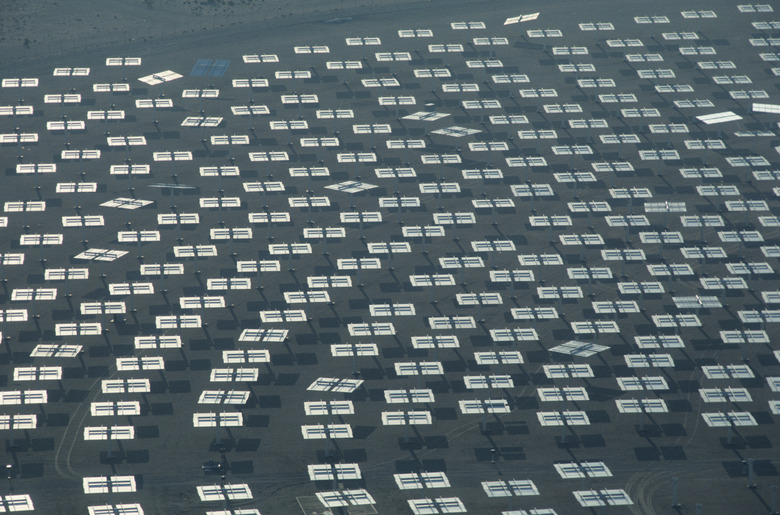Disadvantages & Advantages On Energy Sources
When you flip on a light switch, the energy that brightens your light bulb may come from one of several potential energy sources. Different energy sources have varying advantages and disadvantages that don't just affect your utility bill but that may also have a global impact on air quality and environmental degradation.
Wind Energy
Wind Energy
Giant wind turbines have begun to appear across North America. As wind hits the turbines, they begin to spin, and the resulting spin generates electricity that can power businesses, homes and other outfits. It provides energy without emitting greenhouse gas emissions. It's also very low-cost in the long run, as the U.S. Department of Energy estimates it to be one of the cheapest forms of renewable energy available, and it's inexhaustible as well.
However, some anti-wind activists argue that wind turbines are ugly, noisy, and dangerous to local bird species that may fly into the turbines, according to Middlebury Schools.
Solar Energy
Solar Energy
Solar energy captured by solar panels is a limitless form of energy, as the earth is bombarded with extreme amounts of solar energy every day, according to the National Renewable Energy Laboratory. It's also clean, producing no carbon dioxide, and is very low-maintenance, since solar panels have no moving parts.
Unfortunately, the National Renewable Energy Laboratory says its high installation cost makes it up to four times more expensive than the cost of electricity from a standard utility company. For optimal operation and maximum energy production, it requires year-round sunny weather and is very expensive if repair is necessary, according to the U.S. Environmental Protection Agency.
Fossil Fuels
Fossil Fuels
Fossil fuels like coal and oil are the most widely-used energy source in the world. It's typically the most plentiful, easily accessible and cheapest form of energy, according to Iowa Public Television.
However, Southern Polytechnic State University warns that fossil fuels are limited and will run out one day. Fossil fuels also endanger the environment due to the mining process and the greenhouse gas emissions produced while burning the fuel. Additionally, they may contribute to harmful side effects like air pollution and acid rain.
Biofuels
Biofuels
Biofuels are made from corn, sugarcane and other crops. Ethanol, widely used as a gasoline additive for powering cars, is a biofuel. It's renewable, grown domestically for greater energy security, and often produces less greenhouse gas emissions when burned, according to the National Center for Environmental Economics.
Unfortunately, growing the crops needed for biofuel may pollute the earth's soil and waterways due to farming processes and side effects like fertilizer runoff. Using crops for fuel may also use up vital food crops, and this can drive up global food prices.
Cite This Article
MLA
Duvauchelle, Joshua. "Disadvantages & Advantages On Energy Sources" sciencing.com, https://www.sciencing.com/disadvantages-advantages-on-energy-sources-5017160/. 15 November 2018.
APA
Duvauchelle, Joshua. (2018, November 15). Disadvantages & Advantages On Energy Sources. sciencing.com. Retrieved from https://www.sciencing.com/disadvantages-advantages-on-energy-sources-5017160/
Chicago
Duvauchelle, Joshua. Disadvantages & Advantages On Energy Sources last modified March 24, 2022. https://www.sciencing.com/disadvantages-advantages-on-energy-sources-5017160/
